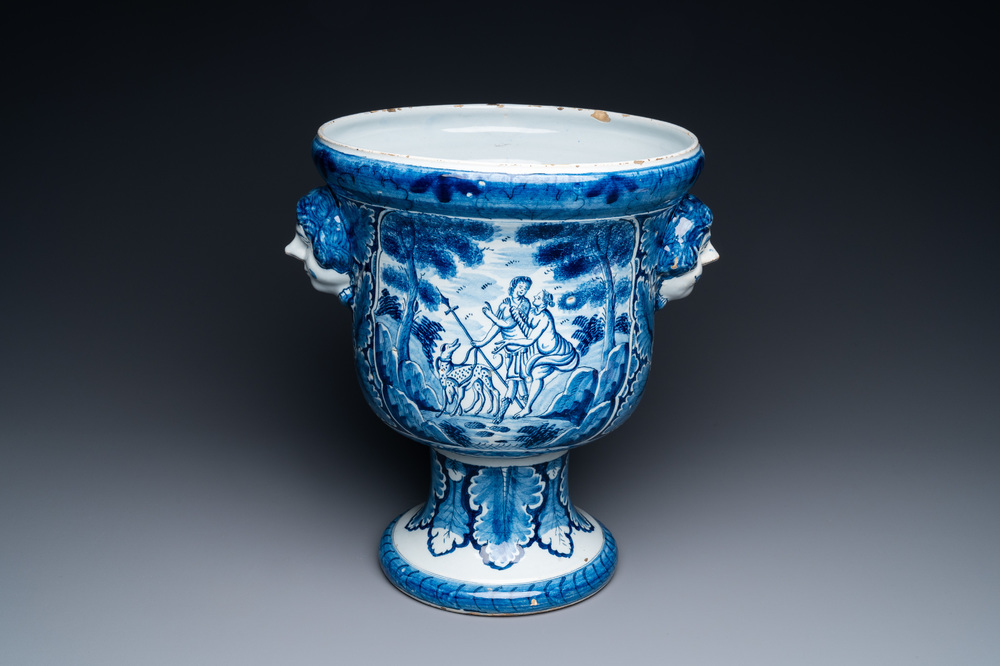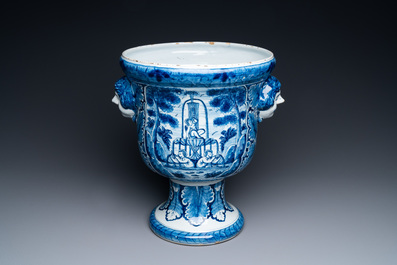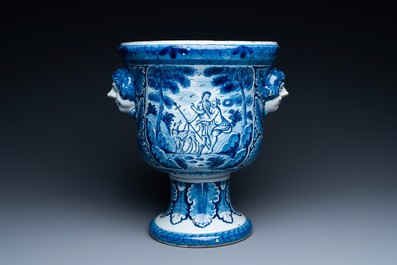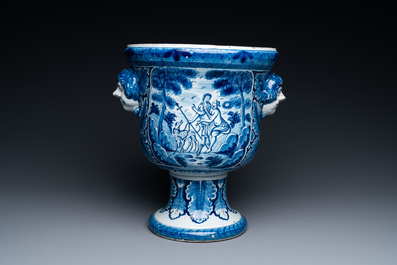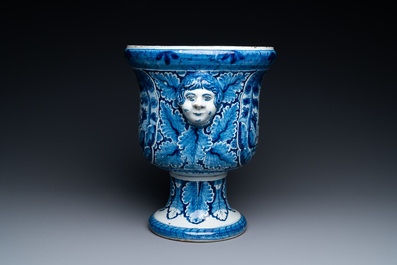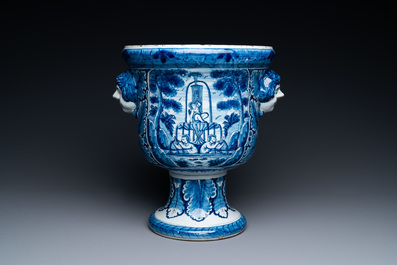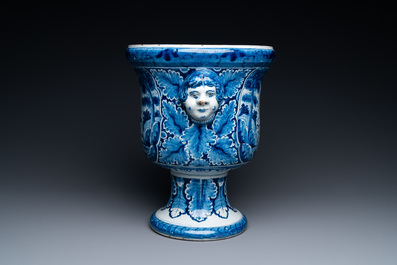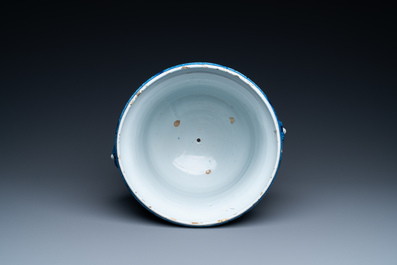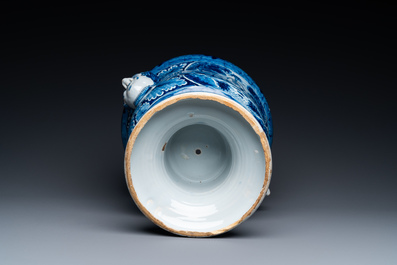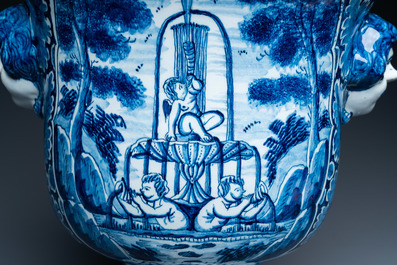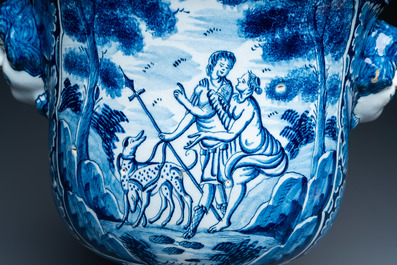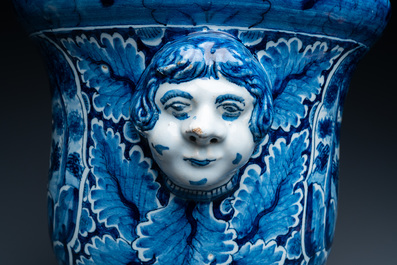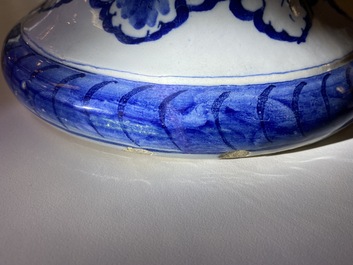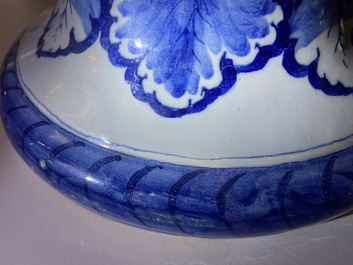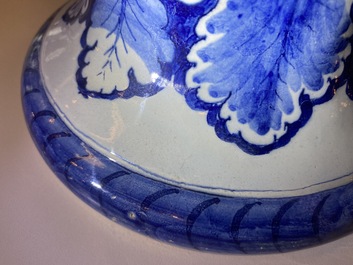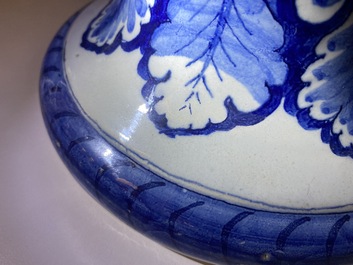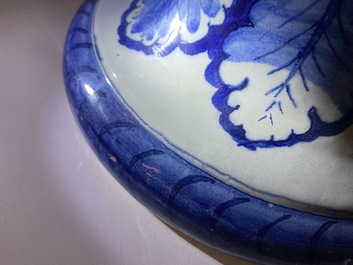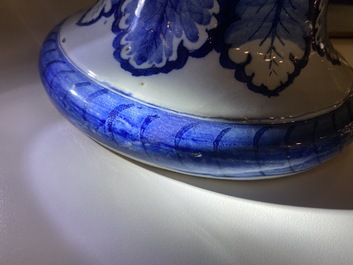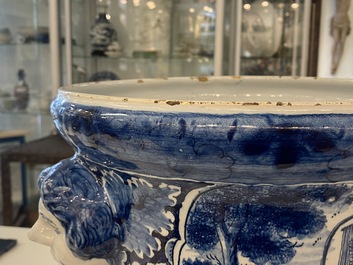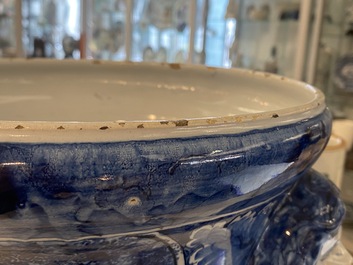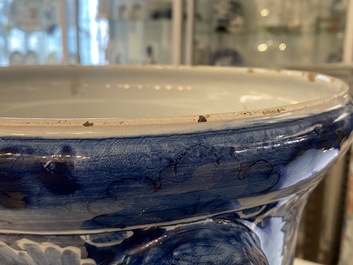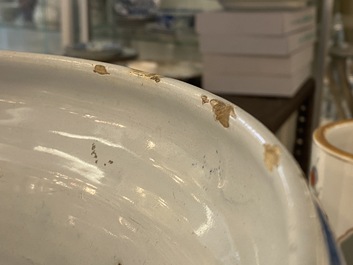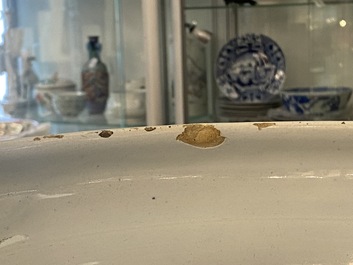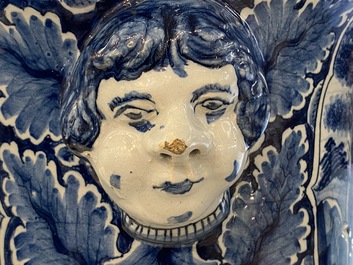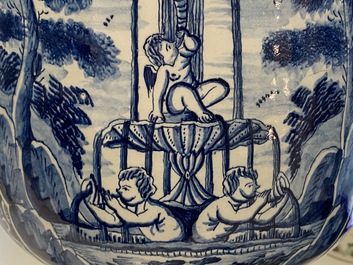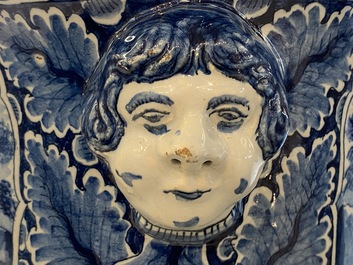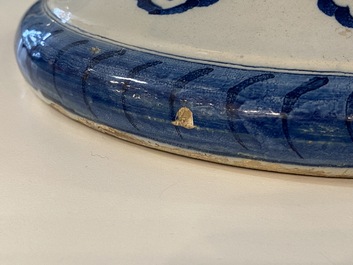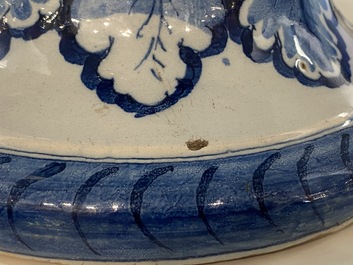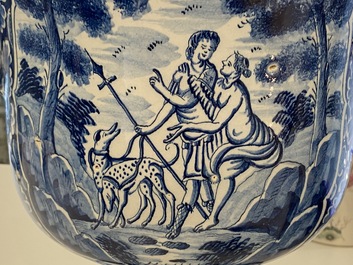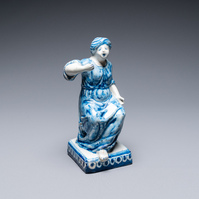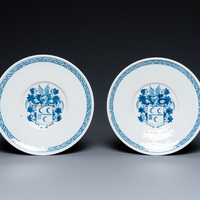We moeten verifiëren dat uw registratie niet om een geautomatiseerde ingave in ons systeem gaat. Vervolledig aub de onderstaande test...
Een grote blauw-witte Delftse jardinière met Venus en Adonis, 1e helft 18e eeuw
H.: 38 cm - Dia.: 30 cm
Condition: (UV-checked)
- A section of the foot of ca. 10 cm long and 5 cm high broken out and restuck, with related retouching and overspraying. The restoration executed to a very high standard and quasi invisible to the naked eye.
- Otherwise in very good condition with typical small superficial rim chips throughout.
Provenance:
- A Dutch private collection.
- Exhibited at TEFAF.
This urn-shaped jardinière or flower vase is sometimes referred to as 'Medici' vase. The Medici Vase is a monumental marble bell-shaped krater sculpted in Athens in the second half of the 1st century AD as a garden ornament for the Roman market. It is now in the Uffizi Gallery in Florence.
Oak leaves are the primary ornament surrounding the central medallions, which hold two representations: Venus and Adonis with two dogs on one side, and a shell-shaped fountain with three putti on the other. The representation of Venus and Adonis goes back to the mythological story of Venus and Adonis as described by Ovid in his 'Metamorphoses'. Venus, the goddess of love, was in love with the beautiful Adonis, yet warns him to be careful when hunting: “... Come on, boy, be not reckless at the expense of my love, do not hunt animals that be armed! Your glory has been paid too dearly for me. Those charms of yours, that youth with which you dazzle me, there is no bristle hog, no lion, no animal that lets eye or heart be tamed by it.” To the great chagrin of Venus, Adonis is eventually killed by a wild boar while hunting. Pictured here, we see the moment Venus warns Adonis of the perils of the hunt, as Adonis breaks away from his resisting lover. In the depicting tradition, in 1554, Titian was one of the first to depict this moment in the history of Venus and Adonis.
